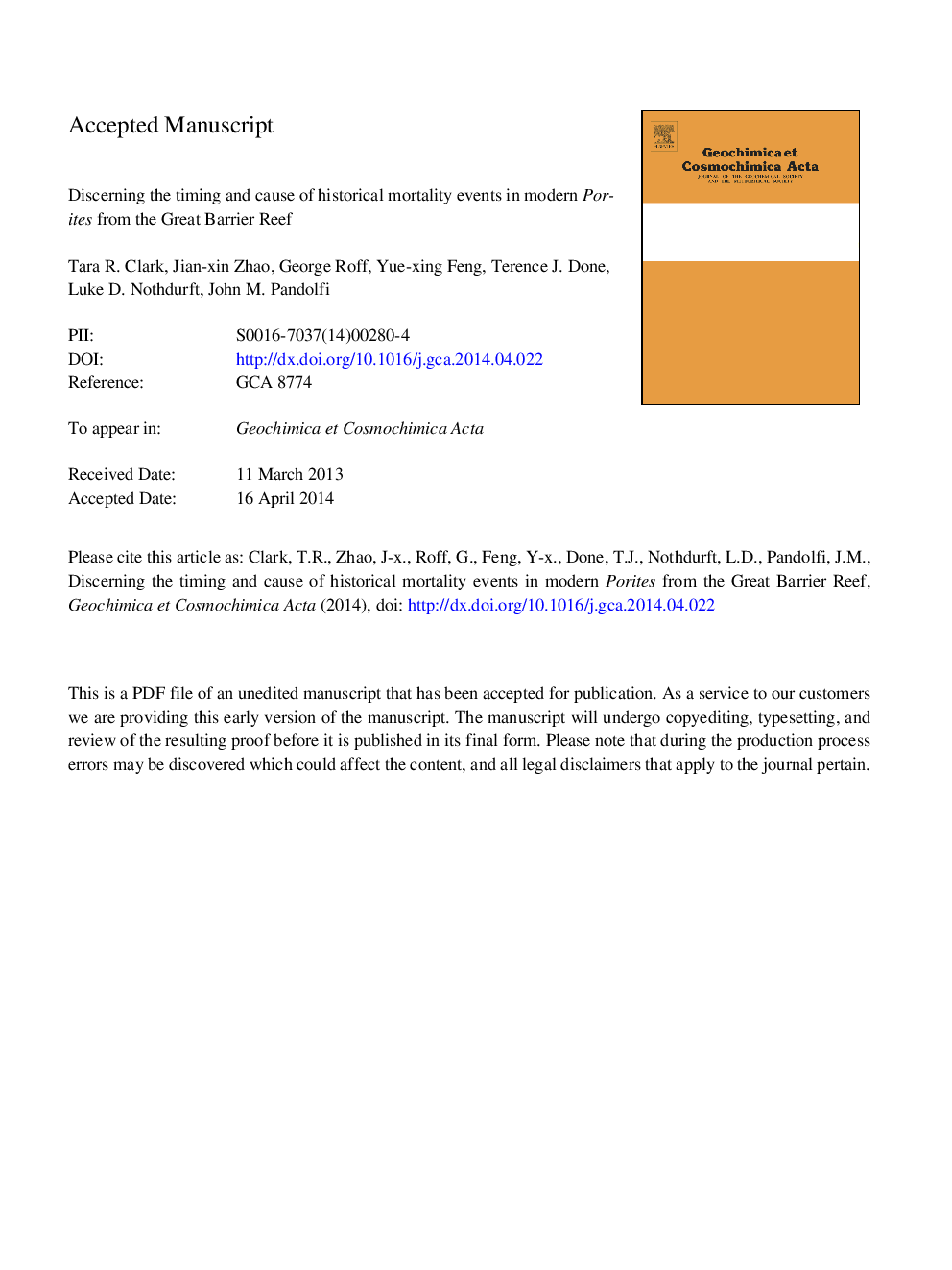| Article ID | Journal | Published Year | Pages | File Type |
|---|---|---|---|---|
| 6438562 | Geochimica et Cosmochimica Acta | 2014 | 63 Pages |
Abstract
The life history strategies of massive Porites corals make them a valuable resource not only as key providers of reef structure, but also as recorders of past environmental change. Yet recent documented evidence of an unprecedented increase in the frequency of mortality in Porites warrants investigation into the history of mortality and associated drivers. To achieve this, both an accurate chronology and an understanding of the life history strategies of Porites are necessary. Sixty-two individual Uranium-Thorium (U-Th) dates from 50 dead massive Porites colonies from the central inshore region of the Great Barrier Reef (GBR) revealed the timing of mortality to have occurred predominantly over two main periods from 1989.2 ± 4.1 to 2001.4 ± 4.1, and from 2006.4 ± 1.8 to 2008.4 ± 2.2 A.D., with a small number of colonies dating earlier. Overall, the peak ages of mortality are significantly correlated with maximum sea-surface temperature anomalies. Despite potential sampling bias, the frequency of mortality increased dramatically post-1980. These observations are similar to the results reported for the Southern South China Sea. High resolution measurements of Sr/Ca and Mg/Ca obtained from a well preserved sample that died in 1994.6 ± 2.3 revealed that the time of death occurred at the peak of sea surface temperatures (SST) during the austral summer. In contrast, Sr/Ca and Mg/Ca analysis in two colonies dated to 2006.9 ± 3.0 and 2008.3 ± 2.0, suggest that both died after the austral winter. An increase in Sr/Ca ratios and the presence of low Mg-calcite cements (as determined by SEM and elemental ratio analysis) in one of the colonies was attributed to stressful conditions that may have persisted for some time prior to mortality. For both colonies, however, the timing of mortality coincides with the 4th and 6th largest flood events reported for the Burdekin River in the past 60 years, implying that factors associated with terrestrial runoff may have been responsible for mortality. Our results show that a combination of U-Th and elemental ratio geochemistry can potentially be used to precisely and accurately determine the timing and season of mortality in modern massive Porites corals. For reefs where long-term monitoring data are absent, the ability to reconstruct historical events in coral communities may prove useful to reef managers by providing some baseline knowledge on disturbance history and associated drivers.
Related Topics
Physical Sciences and Engineering
Earth and Planetary Sciences
Geochemistry and Petrology
Authors
Tara R. Clark, Jian-xin Zhao, George Roff, Yue-xing Feng, Terence J. Done, Luke D. Nothdurft, John M. Pandolfi,
